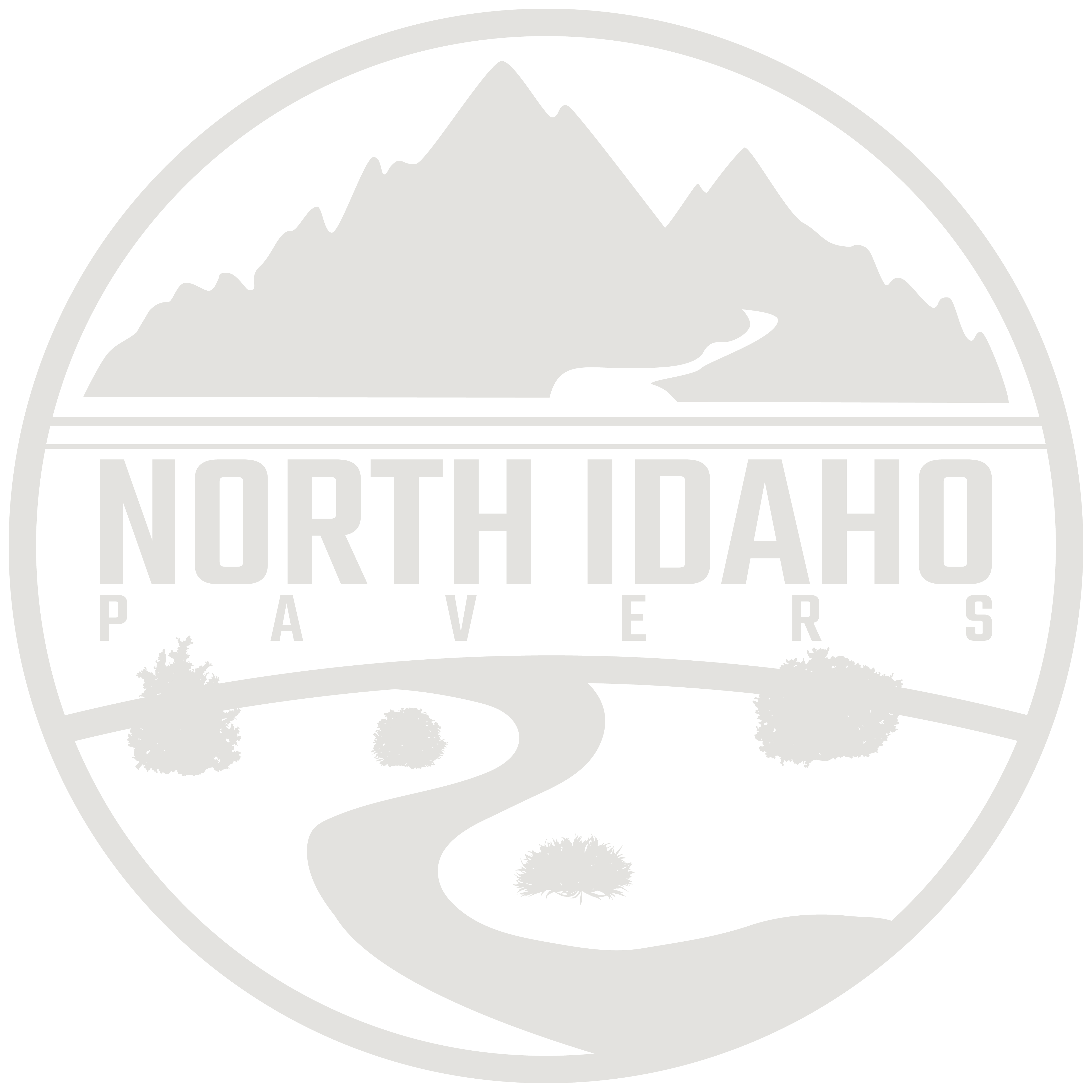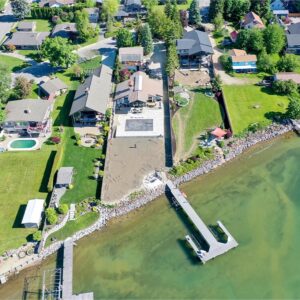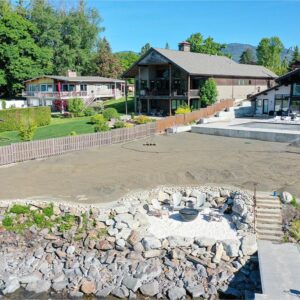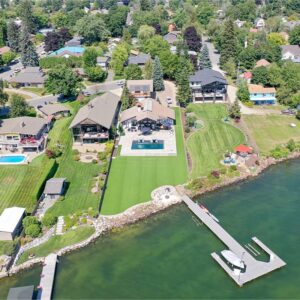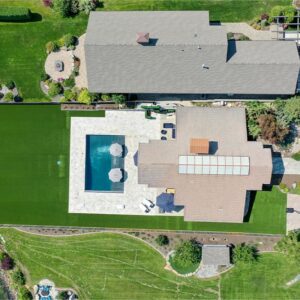TREVOR TURF PROJECT
North Idaho Pavers was commissioned to take on the Trevor Turf project, a residential home alongside the lake. This project aims to install synthetic turf to enhance the landscape around the residential pool area. The goal is to create a more functional and aesthetically pleasing environment that offers a comfortable, low-maintenance space for poolside activities. This installation seamlessly transitions from the pool area to the lakeside barrier wall, providing a cohesive, durable solution that blends the natural beauty of the surroundings with the practicality of synthetic turf. This upgrade enhances usability and elevates the overall look and feel of your outdoor space.
Summary
Synthetic turf can help prevent soil erosion, which is often a concern near bodies of water like lakes. By providing a stable surface, it reduces runoff and soil displacement caused by rain or irrigation.
Low Maintenance
Synthetic turf requires minimal upkeep. Unlike natural grass, there’s no need for watering, fertilizing, or mowing, which saves both time and money while ensuring the area stays consistently green and pristine year-round.
Durability
Synthetic turf is built to withstand heavy foot traffic and extreme weather conditions, making it perfect for poolside areas where constant use and exposure to water could degrade natural grass.
Water Conservation
Since synthetic turf doesn’t require watering, it helps significantly reduce water usage, an important consideration for eco-conscious homeowners or properties aiming to be more environmentally friendly.
Enhanced Aesthetics
It maintains a consistently lush, green appearance, providing a beautifully manicured look without the worry of patchy, brown areas or insect damage. This makes the space visually appealing throughout the year.
Versatility
Synthetic turf is highly adaptable to various landscapes. In this project, it can smoothly transition between the pool area and the lakeside barrier wall, offering a seamless, attractive solution for both high-traffic zones and decorative spaces.
The Challenge
One of the primary concerns when installing synthetic turf is ensuring adequate drainage. Poor drainage can lead to water pooling, which can damage the sub-base and cause the turf to shift or develop mold. Installing a well-compacted base and proper drainage systems is crucial. Seam Visibility: Joining synthetic turf seams seamlessly is a delicate process. If not done correctly, the seams can become visible over time, detracting from the natural appearance of the turf. Precision in cutting and joining the turf is essential to maintain an even, aesthetic finish
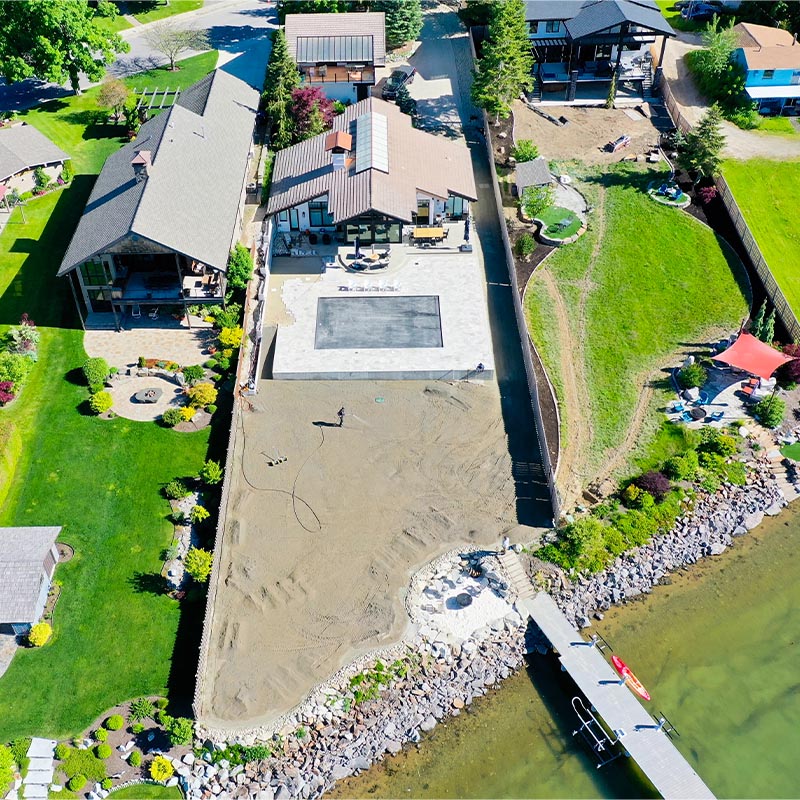
The Impact
Increased Maintenance Costs
Due to the insufficient base material and poor installation, the pavers shifted during freeze/thaw cycles, requiring frequent repairs and upkeep. These ongoing maintenance efforts not only added unexpected financial burdens but also disrupted daily operations, negatively impacting guest experiences.
Aesthetic Damage
The uneven pavers detracted from the resort’s high standards for appearance, which is critical in maintaining its image as a premium destination. This could potentially lead to lower guest satisfaction, affecting return visits and overall profitability.
Sustainability Concerns
From a sustainability standpoint, frequent repairs and the eventual replacement of the pavers meant increased resource use. This not only created waste but also undermined the resort’s commitment to environmental responsibility by contributing to material consumption and energy use that could have been avoided with proper installation.
Implementation Process
Site Preparation
The area is cleared of any existing grass, vegetation, rocks, or debris. Excavation may be required to ensure proper grading for drainage. Typically, the soil is dug down to a depth of 3-4 inches.
Base Layer Installation
A sub-base made of compacted aggregate (such as crushed rock or gravel) is installed. This layer ensures proper drainage and provides a stable foundation for the turf. The base is compacted using a vibrating plate compactor to create a smooth, solid surface.
Geotextile Fabric Installation (Optional)
A weed barrier or geotextile fabric is often placed over the base to prevent weeds from growing through the synthetic turf.
Turf Installation
Synthetic turf rolls are laid out and positioned on the prepared surface. The turf is cut to fit the area precisely, ensuring it covers the entire space without gaps or overlaps. Seams are joined together using special adhesive or seam tape.
Infill Application
Once the turf is secured, infill materials (such as sand, rubber, or silica) are spread over the turf to help the blades stand upright and provide cushioning. This also aids in drainage and maintains the turf’s natural appearance.
Final Grooming and Inspection
The synthetic turf is brushed and leveled to ensure that the fibers are upright and evenly distributed. A final inspection is done to check for proper installation and that all seams and edges are securely anchored.
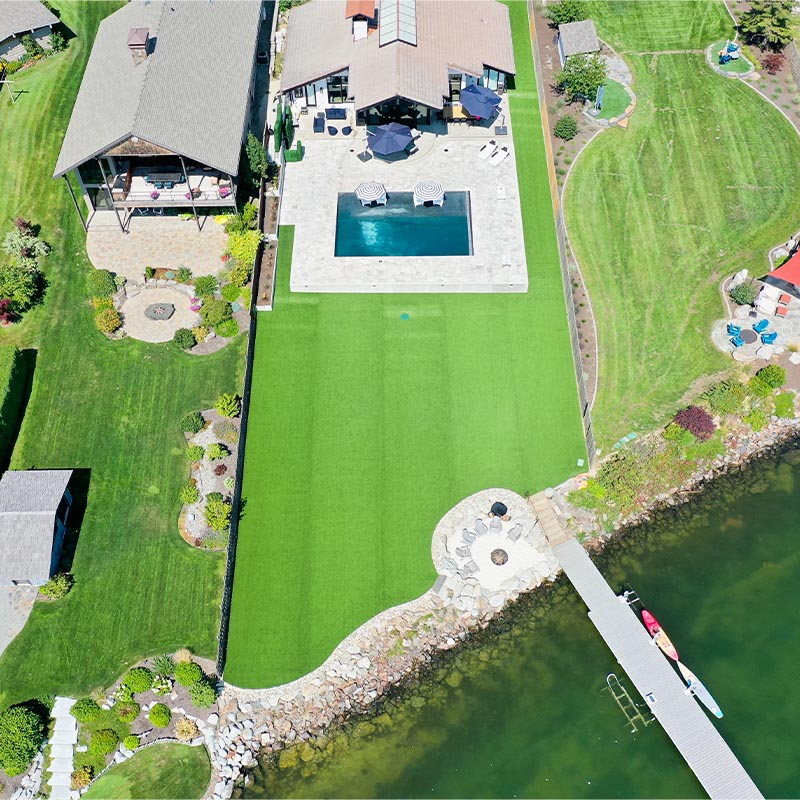
Conclusion
In conclusion, while installing synthetic turf provides many benefits such as low maintenance, durability, and aesthetic appeal, it does come with specific challenges that need to be carefully managed. Ensuring proper drainage, addressing site preparation issues, managing seam visibility, and dealing with potential weed growth are critical for long-term success. Additionally, managing high-traffic areas and the potential for heat buildup is important for maximizing comfort and usability. By addressing these challenges with proper planning and professional installation, property owners can enjoy the many advantages of synthetic turf, especially in diverse environments like lakesides and pool area.
Contact North Idaho Pavers Today
For a free consultation and see how we can elevate your next big project!
Call For A FREE Quote!
